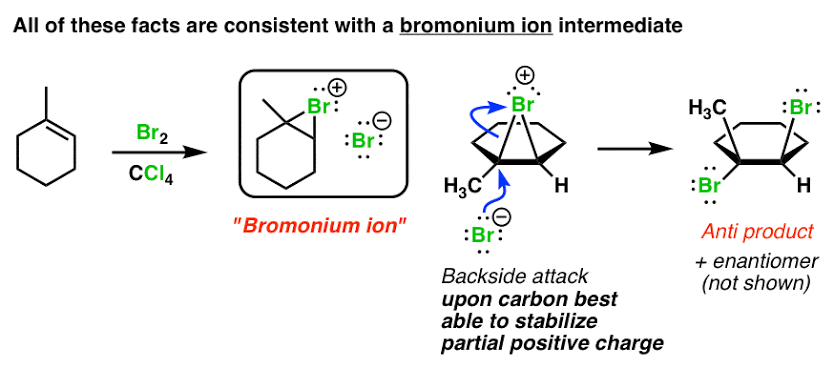Curved arrows are used to illustrate the flow of electrons. Follow the curved arrows and draw the structure of the missing intermediates and products in the following mechanism. Include all lone pairs. Use wedges and dashes to indicate any chiral centers. Ignore inorganic byproducts. :Br Br: of
Curved arrows are used to illustrate the flow of electrons. Follow the curved arrows and draw the structure of the missing intermediates and products in the following mechanism. Include all lone pairs. Use wedges and dashes to indicate any chiral centers. Ignore inorganic byproducts. :Br Br: of
Chemistry
10th Edition
ISBN:9781305957404
Author:Steven S. Zumdahl, Susan A. Zumdahl, Donald J. DeCoste
Publisher:Steven S. Zumdahl, Susan A. Zumdahl, Donald J. DeCoste
Chapter1: Chemical Foundations
Section: Chapter Questions
Problem 1RQ: Define and explain the differences between the following terms. a. law and theory b. theory and...
Related questions
Question

Transcribed Image Text:Curved arrows are used to illustrate the flow of electrons. Follow
the curved arrows and draw the structure of the missing
intermediates and products in the following mechanism. Include
all lone pairs. Use wedges and dashes to indicate any chiral
centers. Ignore inorganic byproducts.
:Br
Br:
P Type here to search

Transcribed Image Text:Draw Intermediate
Br:
%3D
Draw Product
Draw Product
%3D
3D
P Type here to search
<>
Expert Solution
Step 1
Concept:
Bromination of Alkene: The reaction mechanism for an alkene bromination follows two steps.
In the first step of the reaction, a bromine molecule approaches the electron-rich alkene carbon–carbon double bond.
In the second step, a negative bromide anion and is attracted to the slight positive charge on the carbon atoms.
For example follow the following reaction as a sample answer.

Trending now
This is a popular solution!
Step by step
Solved in 2 steps with 2 images

Knowledge Booster
Learn more about
Need a deep-dive on the concept behind this application? Look no further. Learn more about this topic, chemistry and related others by exploring similar questions and additional content below.Recommended textbooks for you

Chemistry
Chemistry
ISBN:
9781305957404
Author:
Steven S. Zumdahl, Susan A. Zumdahl, Donald J. DeCoste
Publisher:
Cengage Learning

Chemistry
Chemistry
ISBN:
9781259911156
Author:
Raymond Chang Dr., Jason Overby Professor
Publisher:
McGraw-Hill Education

Principles of Instrumental Analysis
Chemistry
ISBN:
9781305577213
Author:
Douglas A. Skoog, F. James Holler, Stanley R. Crouch
Publisher:
Cengage Learning

Chemistry
Chemistry
ISBN:
9781305957404
Author:
Steven S. Zumdahl, Susan A. Zumdahl, Donald J. DeCoste
Publisher:
Cengage Learning

Chemistry
Chemistry
ISBN:
9781259911156
Author:
Raymond Chang Dr., Jason Overby Professor
Publisher:
McGraw-Hill Education

Principles of Instrumental Analysis
Chemistry
ISBN:
9781305577213
Author:
Douglas A. Skoog, F. James Holler, Stanley R. Crouch
Publisher:
Cengage Learning

Organic Chemistry
Chemistry
ISBN:
9780078021558
Author:
Janice Gorzynski Smith Dr.
Publisher:
McGraw-Hill Education

Chemistry: Principles and Reactions
Chemistry
ISBN:
9781305079373
Author:
William L. Masterton, Cecile N. Hurley
Publisher:
Cengage Learning

Elementary Principles of Chemical Processes, Bind…
Chemistry
ISBN:
9781118431221
Author:
Richard M. Felder, Ronald W. Rousseau, Lisa G. Bullard
Publisher:
WILEY